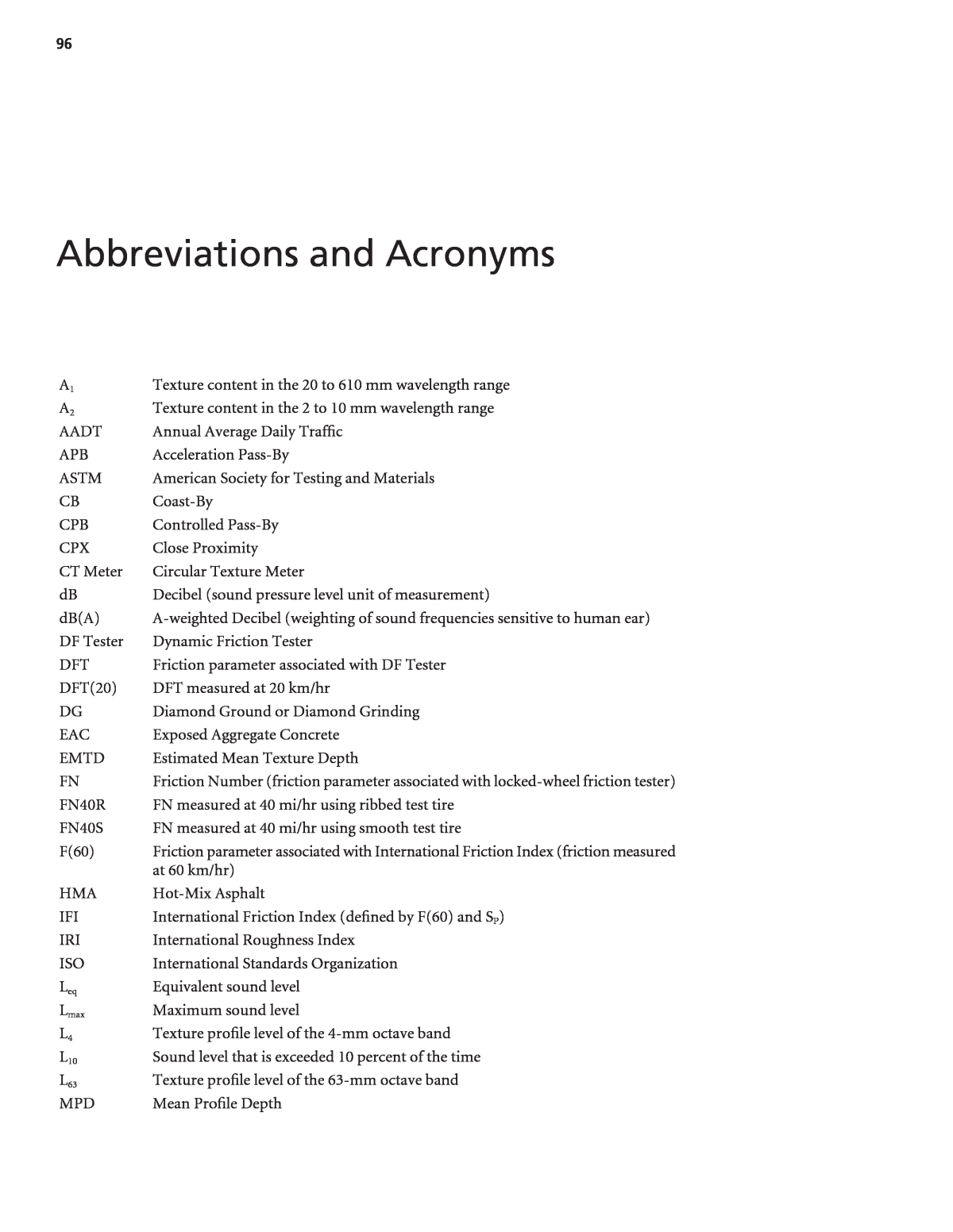

Below is the uncorrected machine-read text of this chapter, intended to provide our own search engines and external engines with highly rich, chapter-representative searchable text of each book. Because it is UNCORRECTED material, please consider the following text as a useful but insufficient proxy for the authoritative book pages.
96 A1 Texture content in the 20 to 610 mm wavelength range A2 Texture content in the 2 to 10 mm wavelength range AADT Annual Average Daily Traffic APB Acceleration Pass-By ASTM American Society for Testing and Materials CB Coast-By CPB Controlled Pass-By CPX Close Proximity CT Meter Circular Texture Meter dB Decibel (sound pressure level unit of measurement) dB(A) A-weighted Decibel (weighting of sound frequencies sensitive to human ear) DF Tester Dynamic Friction Tester DFT Friction parameter associated with DF Tester DFT(20) DFT measured at 20 km/hr DG Diamond Ground or Diamond Grinding EAC Exposed Aggregate Concrete EMTD Estimated Mean Texture Depth FN Friction Number (friction parameter associated with locked-wheel friction tester) FN40R FN measured at 40 mi/hr using ribbed test tire FN40S FN measured at 40 mi/hr using smooth test tire F(60) Friction parameter associated with International Friction Index (friction measured at 60 km/hr) HMA Hot-Mix Asphalt IFI International Friction Index (defined by F(60) and SP) IRI International Roughness Index ISO International Standards Organization Leq Equivalent sound level Lmax Maximum sound level L4 Texture profile level of the 4-mm octave band L10 Sound level that is exceeded 10 percent of the time L63 Texture profile level of the 63-mm octave band MPD Mean Profile Depth Abbreviations and Acronyms
97 MTD Mean Texture Depth NMAS Nominal Maximum Aggregate Size OBSI On-Board Sound Intensity OF Meter Outflow Meter OFT Outflow Time PCC Portland Cement Concrete PI0.0 Profile Index using zero blanking band PSD Power Spectral Density RMS Root-Mean Square SAE Society of Automotive Engineers SI Sound Intensity SP Speed number associated with International Friction Index SPB Statistical Pass-By SPL Sound Pressure Level SPM Sand Patch Method SRTT (ASTM) Standard Reference Test Tire TCB Trailer Coast-By TO Texture Orientation TR Texture Ratio WP Wheelpath
